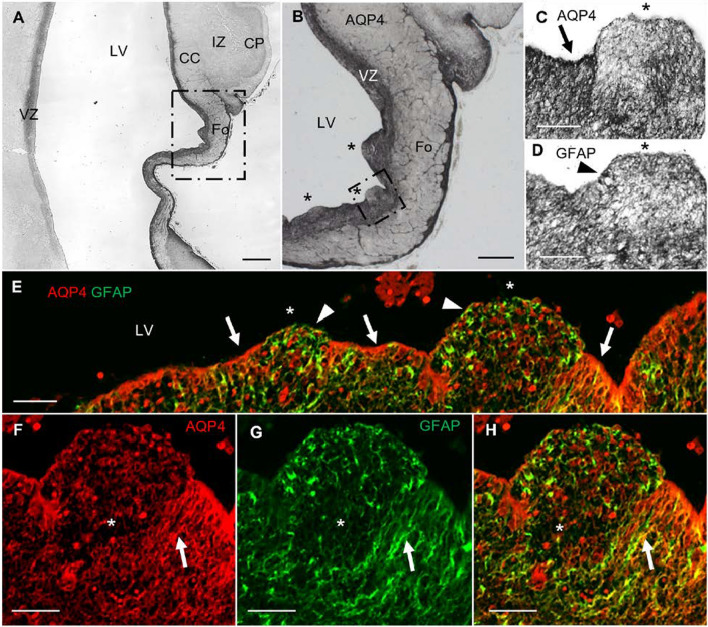Fig. 5.
VZ disruption in a myelomeningocele case complicated with hydrocephalus. a Panoramic view of a coronal section of the parietooccipital area labeled with anti-AQP4. b Magnification of the square in a. Asterisks indicate areas of VZ disruption. c Magnification of the square in b. Arrow points to AQP4 expression lining the ventricle. Asterisk marks the area of disruption, showing characteristic protrusion toward the ventricle, without AQP4 expression lining the ventricle. d Slide stained in parallel with c for GFAP. Asterisk marks VZ disruption. Arrowhead marks cellular expression of GFAP. e Confocal microscopy of a slide stained in parallel with b for AQP4 (red) and GFAP (green). AQP4 is expressed along the lining of the ventricle (arrows) but not in the areas of VZ disruption (asterisk), where GFAP expression is dominant (arrowheads). f–h Detail of the VZ showing that AQP4-positive glial radial cells (arrows) are not present in areas of VZ disruption. CC, corpus callosum; CP, cortical plate; Fo, fornix; IZ, intermediate zone; LV, lateral ventricle; VZ, ventricular zone. Scale bar: a 500 µm; b 160 µm; c–h = 80 µm

